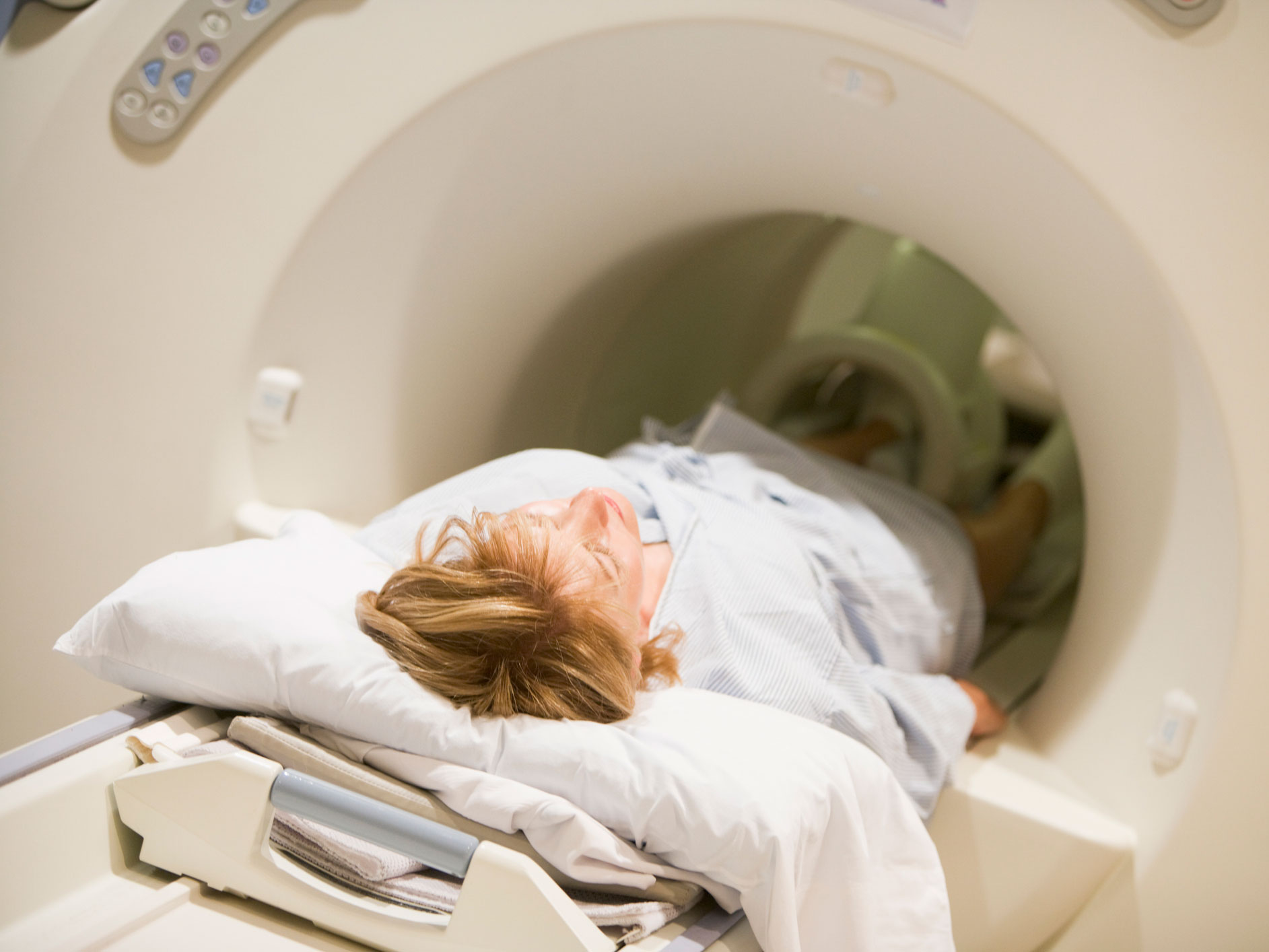Get Easy Health Digest™ in your inbox and don’t miss a thing when you subscribe today. Plus, get the free bonus report, Mother Nature’s Tips, Tricks and Remedies for Cholesterol, Blood Pressure & Blood Sugar as my way of saying welcome to the community!
Antioxidant counters radiation ‘cancer boost’ from CT, PET, X-ray and more

Yesterday I had to have a CT scan. I’ve been having stomach trouble for a few months so the doctor decided to check the health of my intestines by having me drink a contrast agent and then using the CT to watch its progress through my digestive system.
In addition to the contrast agent I received, the CT also gave me a dose of radiation.
Now, that may not seem like a big deal. However, due to a number of illnesses and injuries in the past two years, I’ve had a total of four CT scans and two X-rays.
And, even though the levels of low-dose radiation received during CTs and X-rays are generally considered safe, that might not be the case…
Giving cancer-capable cells a competitive advantage
The study, performed at the Wellcome Sanger Institute and the University of Cambridge, took a look at how low-dose radiation, equivalent to three CT scans, might give cancer-capable cells a competitive advantage over normal cells in healthy tissue.
You see, researchers have previously shown that our normal tissues, like our skin, are battlefields where mutant cells compete for space against healthy cells. That’s because we all have cancer-capable mutant cells that increase in number as we age.
And, although very few eventually go on to form cancer, the Sanger and Cambridge scientists theorized that radiation exposure could tip this balance in favor of the mutant cells.
The team gave mice a 50 milligray dose of radiation, equivalent to three or four CT scans. They saw the number of cells with mutations in the p53 gene, a well-known genetic change associated with cancer, increase substantially.
According to Dr. David Fernandez-Antoran, first author from the Wellcome Sanger Institute, “Our bodies are the set of ‘Game of Clones’ – a continuous battle for space between normal and mutant cells. We show that even low doses of radiation, similar to three CT scans’ worth, can weigh the odds in favor of cancer-capable mutant cells.”
Enhancing safety during medical imaging
And, while this is all clearly bad news for all of us who have had multiple medical imaging procedures, there was also a bright light at the end of the tunnel…
The scientists found that giving the mice an antioxidant before radiation promoted the growth of healthy cells, which outcompeted and replaced those p53 mutant cells.
The antioxidant is known as N-Acetylcysteine (NAC). And, basically, it can be taken prior to diagnostic imaging to help protect healthy cells from mutant takeover.
The scientists do warn though that without radiation exposure the antioxidant did not help normal cells battle mutant clones.
This group of scientists only saw benefits when NAC was taken right before radiation exposure (though previous research has indicated NAC may help starve cancer cells and keep it from spreading in humans).
However, many other health impacts are linked to NAC, like supporting liver health, detox, improving insulin sensitivity, mental function and some lung conditions.
So, know your risks when it comes to radiation from medical procedures and prepare appropriately. Be sure to question your doctor about diagnostics that expose you to any amount of radiation to be sure they’re absolutely necessary.
Most people may not undergo 3 or 4 CT scans in a year. But consider the tests you receive yearly that contribute, such as bone density, mammography and maybe a common X-ray for back pain, in case there’s a reason you may also be facing other tests that could expose you to higher doses of radiation.
To get some idea of radiation exposure based on procedure, here’s a list from the Harvard Health Publishing…
| Imaging procedures and their approximate effective radiation doses* | ||
| Procedure | Average effective dose (mSv) | Range reported in the literature (mSv) |
| Bone density test+ | 0.001 | 0.00–0.035 |
| X-ray, arm or leg | 0.001 | 0.0002–0.1 |
| X-ray, panoramic dental | 0.01 | 0.007–0.09 |
| X-ray, chest | 0.1 | 0.05–0.24 |
| X-ray, abdominal | 0.7 | 0.04–1.1 |
| Mammogram | 0.4 | 0.10–0.6 |
| X-ray, lumbar spine | 1.5 | 0.5–1.8 |
| CT, head | 2 | 0.9–4 |
| CT, cardiac for calcium scoring | 3 | 1.0–12 |
| Nuclear imaging, bone scan | 6.3 | |
| CT, spine | 6 | 1.5–10 |
| CT, pelvis | 6 | 3.3–10 |
| CT, chest | 7 | 4.0–18 |
| CT, abdomen | 8 | 3.5–25 |
| CT, colonoscopy | 10 | 4.0–13.2 |
| CT, angiogram | 16 | 5.0–32 |
| CT, whole body | variable | 20 or more |
| Nuclear imaging, cardiac stress test | 40.7 | |
| *The actual radiation exposure depends on many things, including the device itself, the duration of the scan, your size, and the sensitivity of the tissue being targeted.
+Dual energy x-ray absorptiometry, or DXA. | ||
| Source: Mettler FA, et al. “Effective Doses in Radiology and Diagnostic Nuclear Medicine: A Catalog,” Radiology (July 2008), Vol. 248, pp. 254–63. |
Editor’s note: Discover how to live a cancer prevention lifestyle — using foods, vitamins, minerals and herbs — as well as little-known therapies allowed in other countries but denied to you by American mainstream medicine. Click here to discover Surviving Cancer! A Comprehensive Guide to Understanding the Causes, Treatments and Big Business Behind Medicine’s Most Frightening Diagnosis!
Sources:
- Low doses of radiation promote cancer-capable cells — Wellcome Trust Sanger Institute












